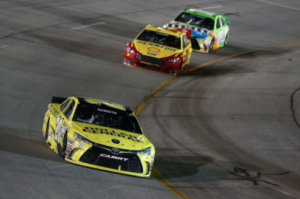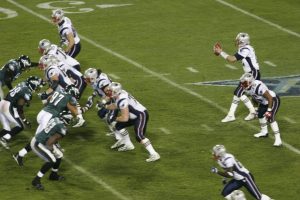Just one year after winning the National League East Division in 2012, the Washington Nationals fell out of contention for a first place finish by a large margin last year. The entrance of Bryce Harper and his Rookie of the Year season in 2012 brought with it a glimmer of hope for Nats fans that maybe, just maybe, their team wouldn’t have to finish at third place or below every season. Maybe they could be a serious playoff contender. Maybe they could win the World Series. 2013 was a different year, though, and with Harper’s unimpressive statistics partnered with should-be ace pitcher Stephen Strasburg’s worst season to date, the Natitude was running low by the time autumn rolled around.
What can be done though? How can the Nationals make this year more reflective of 2012 and less so like 2013? It boils down to the basics.
On the Mound
It is hard to find a pitching staff in the MLB that’s any better than the Nationals. Here’s the core four that will bring Washington to see late October.
Stephen Strasburg: From his first two starts this season, we can see that Strasburg still has the velocity on his fastball that made him so hyped when he entered the league. As with many flamethrowers, it’s his secondary pitches that need the work. Fastballs alone do not warrant success in the Majors and the Mets and Braves have already proven to the rest of baseball that his fastball is hittable. Strasburg has been trying to add a new pitch to his arsenal this season, the slider, in order to mix in some deception for those batters looking for the heat. If Strasburg can manage this addition to his skillset effectively by keeping his speed up and the location down, he will anchor this pitching staff and avoid a dismal repeat of last season’s results.
Gio Gonzalez: After going 11-8 in 32 starts last season with an ERA of 3.36, it appears that Gonzalez’s main concern this season may be centered on run production around him. That many no decisions and 8 losses with a respectable ERA begs the question of whether or not things would be different if just a couple more runs were batted in around him. But regardless, Gonzalez has gotten off to a strong start this season with 6 innings pitched against the Mets last week and only 3 hits surrendered. He is currently day-to-day with a stomach virus, which is unlikely to keep him out for long. If you’re into sabermetrics, Gonzalez’s WAR had gone down 1.5 points to 3.0 last season as compared to 2012, most likely because of the increased home runs and hits allowed, along with a decrease in the number of strikeouts.
Doug Fister: Acquired in early December 2013 from the Detroit Tigers, Fister helps the Nationals in replacing former starter Dan Haren, who moved to the Dodgers for 2014, and brings in another ERA that middles around 3.5. Coming off his best season so far in terms of winning percentage (.609) and strikeouts (159), injuries will be the main concern for Fister as the early regular season gets underway. He is currently on the 15-day disabled list for a back injury that has prevented him from throwing from more than 60 feet. Control will have to be his focus this season once he is back on the mound, as his walks, hit-batters, and wild pitches all increased from 2012 to 2013.
Jordan Zimmermann: In his sixth season with the Nationals, Zimmermann provides a solid ERA (3.25 in 2013 and 2.94 in 2012) and the potential for a high strikeout count, sending 7 of the first 14 batters he faced Friday back to the dugout. Battling the flu just days earlier, Zimmermann had been under close watch by first year Nationals manager Matt Williams. He was taken out after giving up just one run in the 5 innings and throwing 81 total pitches. He posted a career-high winning percentage last season (.679) and kept opposing batters to a batting average of .222.
At the Plate
The Nationals have young as well as experienced talent at their disposal this season. As usual, consistency and longevity will be the name of the game from an offensive standpoint this season.
Bryce Harper: Harper has been moving around quite a bit in the lineup so far this season and appears to be unable to find a groove early in 2014. Just 3 for 21 this season, he even went so far as to claim that he felt “pretty lost” up at the plate. Coming into the season bigger than ever, Harper will undoubtedly be a central figure when it comes to the Nationals’ run production. He just needs to figure out how to use his newly acquired bulk. His spring training batting average of .239 may have seemed like no big deal before the season started, as preseason stats cannot be weighed too heavily, but if he continues to struggle going forward, the Nationals hitting coach may have a moody problem on his hands. Nonetheless, Harper improved in batting average and strikeouts from 2012 to 2013 and even came one RBI away from matching 2012’s total in his injury-shortened 2013 season.
Jayson Werth: Although he may not have shaved or cut his hair since coming to the Nationals on a $16 million per year contract in 2011, Werth has become more and more valuable since he arrived in the District. Batting .318 last season was a career best for him and tacking on 25 home runs makes him a player to watch this year, as the Nationals will need him to at least regain similar success in order to be serious playoff contenders. So far this season he has 7 hits in 18 at bats, good for a .389 batting average, and has an OBP over .500. He may be stealing Harper’s thunder getting off to such a hot start, but his offensive presence will surely get Harper some better pitches in an attempt to avoid pitching to Werth with men on base.
Ian Desmond: A consistent high .200s hitter, Desmond has been with Washington since his start in 2009. In the most recent two seasons, Desmond has improved his offensive game steadily, bringing his hits, home runs, RBI, and batting average up from previous years’ marks. An area where he appears to be struggling most is getting to balls on the lower outside corner and getting around on pitches up and inside, giving him seven strikeouts already this year. Strikeouts will have to be a stat to watch for this season since his strikeout count jumped from 113 in 2012 to 145 in 2013.
Photo: Keith Allison/Flickr





